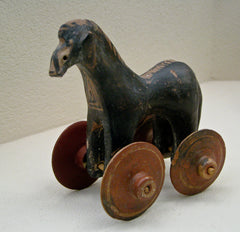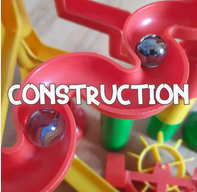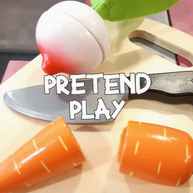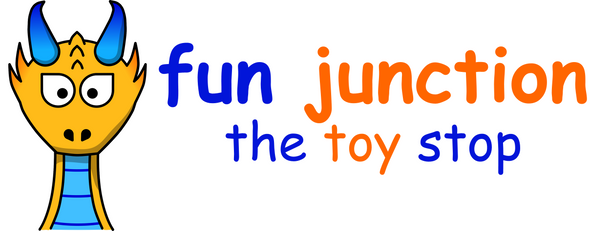Deeply rooted in history

Pretend-play toys are not a new concept, though the way that we produce them and our attitudes towards them are probably very different than they were in the distant past. As you'll see in this post, archaeologists have helped demonstrate the ancient use of toys for play in various ways.
Despite the limited range of toys found, there may be some interesting underlying things we can learn form these discoveries and how they relate to modern toys and play.
Domestic play, well-being, and self-care
There have been dolls in human lives for at least four-thousand years (click here to find out about the 4000-year-old doll head found on the Italian island of Pantelleria). Dolls seem oddly modern yet strangely innate to how we behave at the same time. To hear about a four-thousand year old doll is definitely a little surprising, but also oddly comforting.
 The Fun Junction team often draw on our own experiences as parents etc. to help us decide what to stock. Dolls are a constant in the shop as they offer a range of different play styles from learning about fairness and companionship, to preparing for the changes that might come at home in response to the care involved in a new sibling.
The Fun Junction team often draw on our own experiences as parents etc. to help us decide what to stock. Dolls are a constant in the shop as they offer a range of different play styles from learning about fairness and companionship, to preparing for the changes that might come at home in response to the care involved in a new sibling.A traditional 'baby doll' might be seen as part of a larger range of what many regard as 'domestic' toys. These include things like toy pots and pans, pretend food, and sweeping brushes. At times the domestic nature of toys like these can be held against them, as they may seem anti-aspirational.
However, 'domestic' is literally a reference to your domicile, your home. Kids like to replicate what they see their parents doing. When we spend time on something, our children can't help but wonder why; what is so great about laundry, or cooking, or any other chore? They feel inclined to play-act this as it's part of their lives, it's as familiar to them as any other feature of their home.
In terms of why 'domestic toys' are useful, it's always good to remember that one day our children will grow up and move into a new place that they'll call 'home'. Playing in a domestic way needn't be seen as a bad thing (after all only a very small part of the population that will have the luxury of not doing any household chores as adults). We might as well start preparing them while they're young and help them take an active role in keeping their house in order.
Self-care, and knowing that you're looking after your own (and your loved-ones') well-being is hardly a bad thing. We would all wish this for our kids; a life where they're eating right and looking after themselves is certainly something to have them aspire towards. Domestic toys can be as 'aspirational' as we choose to make them.
It's also a little humbling to think of a little Pantellerian child four-thousand years ago mimicking the care that was shown to them as they prepared for their adult life. A life that that happened at a time when the last woolly mammoths were walking the Earth on Wrangel Island (Russia), Stonehenge was being built, and China was entering the Bronze age.
Mechanism, Innovation, and growing to the future
We've also been playing with toy vehicles for as long, if not longer (such as the 5000-year-old chariot set discovered in Turkey). Mechanism and movement are part of what make human beings so special so it's hardly surprising that a toy vehicle is one of the oldest toys discovered so far by archaeologists. Toy vehicles and construction toys are still two of the top selling ranges for us.
 Where 'domestic' toys are, at their heart, toys relating to comfort and nurturing. Mechanical toys help children familiarise themselves with the innovations around them. The archaeologists who found the chariot in Turkey suspect that royal bronze-age children likely played with it. What these children learned about one of the most important innovations of their time, we can only imagine.
Where 'domestic' toys are, at their heart, toys relating to comfort and nurturing. Mechanical toys help children familiarise themselves with the innovations around them. The archaeologists who found the chariot in Turkey suspect that royal bronze-age children likely played with it. What these children learned about one of the most important innovations of their time, we can only imagine.However, we can still see that children are often at the fore-front of noticing which innovations are becoming the most staple parts of the society they're growing up in.
Ten to fifteen years ago very young children visiting the toy shop had a clear fascination with toy mobile phones and tablets. Why wouldn't they? Parents and other caregivers were using them more and more and babies and toddlers are uniquely tuned in on this sort of behaviour. They knew that phones and tablets would be important in their world and they were right.
We can't speculate too much on what's next but the newer wave of babies and toddlers seem more inclined towards 'sensory play' and 'domestic toys'. Could this be a reflection of newer parent's habits/values? Perhaps in a post-lockdown (post-zoom call) world we're all feeling the need to connect with more 'non-virtual' experiences? (Or as teenagers/ those babies from ten to fifteen years ago might put it, we all feel the need to 'touch grass')
Toy-free play?
Is it so hard to imagine that pretend play and the toys associated with it have been at the heart of childhood development for at least as long as these ancient artefacts indicate?
Pretend play seems almost intuitive to a lot of children, as natural as the inclination to try and roll over, to talk, or to walk.
For a number of years now there has been a fairly vocal shift towards toy-free play for children. You can see a little of this debate in this old post by our old resident toy blogger John by following this link.
We can imagine that some of this comes as a reaction to the perceived over-abundance of toy choices. It can be easy to villainise something like the toy industry as a whole in response to the absolute volume of toys available in the world. However, this is a problem of quantity and to call for removing all toys (or even most toys) from children seems a harsh response.
When it comes to pretend-play a true quality toy or play-set can offer a child hours of uninterrupted 'experimentation' as they use these tools to develop a better understanding of themselves and how they relate to the world around them.
A few favourites
 We aren't trying to force the issue but we would also be remiss as a toy shop if we didn't point you towards some of our own favourite pretend-play toys.
We aren't trying to force the issue but we would also be remiss as a toy shop if we didn't point you towards some of our own favourite pretend-play toys.Our website is constantly being updated so this section will often change and shift. However, you will always find some of the very best pretend-play toys that we stock when you click this link. We hope you enjoy taking a look and feel free to tell us what you thought about this post either on our Facebook page or over on Twitter.
Follow this link to find the 'Let's Play' section of our website.
Image credit:
(Please note, the toy horse pictured at the beginning of this post is from a tomb dating between 950-900 BC displayed at Kerameikos Archaeological Museum in Athens. The ancient toys discussed in our post are much older but no unlicensed images of these are available. To see the toys described here please follow the links to the original articles. The horse toy image is used under Creative Commons licence and the original can be found here.)


